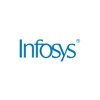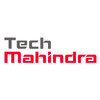
i
Expicient
Filter interviews by
Expicient Interview Questions and Answers
Expicient Interview Experiences
4 interviews found
I applied via Company Website and was interviewed in Jul 2024. There was 1 interview round.
(2 Questions)
- Q1. Mostly on core java
- Q2. One of those framework like angular react they were asking
Interview Preparation Tips
Java Developer Interview Questions asked at other Companies
I applied via Recruitment Consulltant and was interviewed in Aug 2024. There were 2 interview rounds.
Its depends on Aptitude syllabus of CAT
Its on Coding knowledge
Interview Preparation Tips
- ASP.Net
HR Executive Interview Questions asked at other Companies
Asked about arrays ,strings
(1 Question)
- Q1. About testing techniques..dont remember much thiugh
Associate Interview Questions asked at other Companies
Interview Questionnaire
2 Questions
- Q1. Question from c, dbms, sql query,puzzles and mainly focus on projects
- Q2. Presentation round(social topics)
Interview Preparation Tips
Experience: Bit difficult aptitude question and there is negative marking so i have attempted just 16 questions.
Tips: prepare from RS AGGARWAL
Duration: 60 minutes
Total Questions: 40
Round: Technical Interview
Experience: I have answered one c programming and query but i have given the detailed explanation about my projects, and then he asked some hr question.
Tips: need to prepare the project with architecture diagram, flowcharts and implementation in real life.
Round: Other Interview
Experience: they have given me one topic to present for 15 minutes.
Tips: Explain the topic from starting and be prepare to give answers for their questions
Skills: Puzzle solving capability, presentation skill
College Name: NIT SURATHKAL
Motivation: Environment is very good and good opportunity to learn
Software Engineer Interview Questions asked at other Companies
Expicient interview questions for popular designations
Top trending discussions






Interview questions from similar companies

I applied via Referral and was interviewed before Jan 2021. There was 1 interview round.
Interview Questionnaire
1 Question
- Q1. Java questions
Interview Preparation Tips

I applied via Campus Placement and was interviewed before Feb 2021. There were 3 interview rounds.
Aptitude round consists Logical reasoning, General Aptitude, Grammar related questions etc. All are moderate level questions.
(3 Questions)
- Q1. Explain OOPs w.r.t Java
- Ans.
OOPs is a programming paradigm that uses objects to represent real-world entities. Java is an OOPs language.
OOPs stands for Object-Oriented Programming System
Java is a class-based OOPs language
Encapsulation, Inheritance, Polymorphism, and Abstraction are the four pillars of OOPs
Objects have state and behavior
Java supports interfaces, which allow for multiple inheritance
Example: A car can be represented as an object wit...
- Q2. Explain about the projects that you have worked on
- Q3. Explain how Java solves machine dependency of code execution
- Ans.
Java solves machine dependency by using bytecode and virtual machine.
Java code is compiled into bytecode which is platform-independent
The bytecode is executed by the Java Virtual Machine (JVM) which is platform-specific
JVM translates bytecode into machine code for the specific platform
This allows Java code to run on any platform with a JVM installed
Example: A Java program compiled on Windows can run on Linux or Mac as
(2 Questions)
- Q1. Why should we hire you?
- Q2. Tell me about yourself.
Interview Preparation Tips
- Java
Skills evaluated in this interview

I applied via Campus Placement and was interviewed before May 2021. There were 2 interview rounds.
Numerical ability and logical reasoning followed by some coding mcqs
(1 Question)
- Q1. Print 1 to 100 without for loop
- Ans.
Printing 1 to 100 without for loop
Use recursion to print numbers from 1 to 99
Print 100 outside the recursion
Use a base case to stop recursion at 100
Interview Preparation Tips

I applied via Campus Placement and was interviewed before Jun 2021. There were 2 interview rounds.
Simple aptitude test
(1 Question)
- Q1. General questions as per your cv
Interview Preparation Tips
- Aptitude

I applied via Campus Placement and was interviewed before Aug 2021. There were 2 interview rounds.
It was a basic aptitude test.
(1 Question)
- Q1. Interview was fine. Mostly asked about my final year project.
Interview Preparation Tips

I applied via Newspaper Ad and was interviewed before Jun 2021. There were 3 interview rounds.
(1 Question)
- Q1. Basic questions of java.
(1 Question)
- Q1. Intro and other hr related questions.
Interview Preparation Tips
Expicient Interview FAQs
Tell us how to improve this page.
Expicient Interviews By Designations
Interview Questions for Popular Designations
Expicient Interview Process
based on 5 interviews
Interview experience
Interview Questions from Similar Companies
Fast track your campus placements
Expicient Reviews and Ratings
based on 13 reviews
Rating in categories
|
Software Developer
5
salaries
| ₹3 L/yr - ₹3.5 L/yr |
|
Associate Consultant
4
salaries
| ₹5 L/yr - ₹14 L/yr |
|
Payroll Analyst 1
3
salaries
| ₹238 L/yr - ₹238 L/yr |

Infosys

TCS

Wipro

HCLTech
- Home >
- Interviews >
- Expicient Interview Questions











